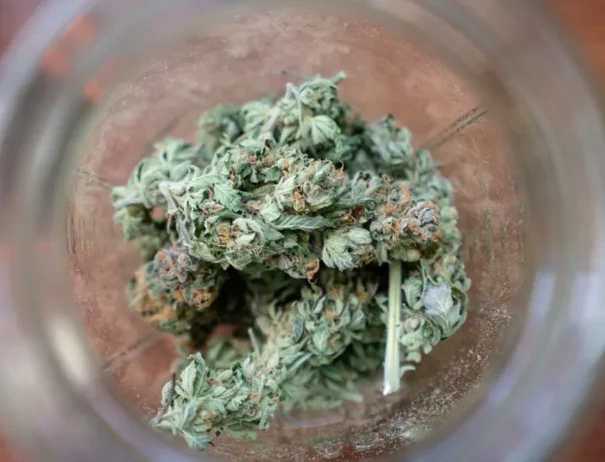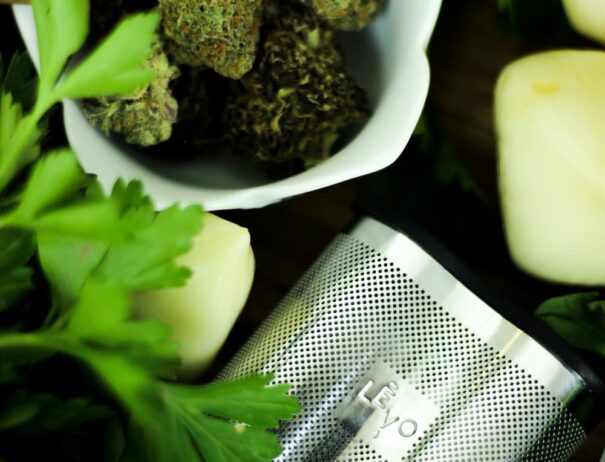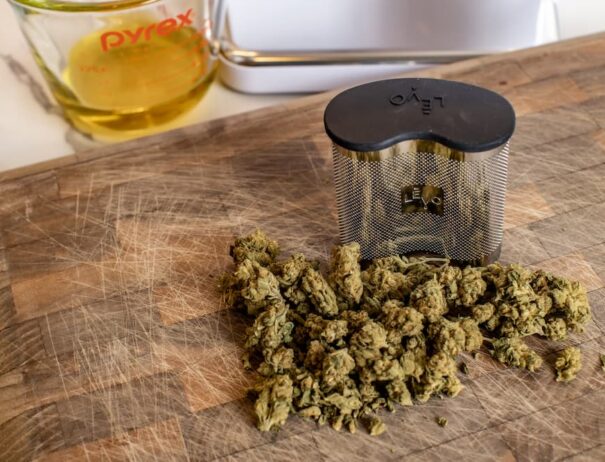How to Decarb Flower at Home and Reduce the Smell
Making your flower edibles, topicals, and tinctures at home is a great way to save money and take control of what you’re putting in and on your body. But it can be a process, and not a particularly discreet one considering flower’s recognizable skunky smell.
Before you can dive into any recipe, you first have to activate your flower through a method called decarboxylation. Decarboxylating flower at home usually releases that skunky smell throughout your house, which can be less than desirable. Fortunately, new gadgets have finally made it possible to reduce the smell from decarboxylation.
What Is Decarboxylation?
Decarboxylation, commonly known as “decarbing,” is the process of altering the chemical structure of the cannabinoids found in flower through heat. It’s also referred to as “activating” flower and can be achieved by using the Activate setting on the LĒVO II.
What’s being activated are chemical compounds known as cannabinoids. These are the compounds within flower that interact with our body’s endocannabinoid system (ECS) and impart the effects associated with the plant. The two most well-known cannabinoids are cannabidiol (CBD) and tetrahydrocannabinol (THC).
Before cannabinoids like CBD and THC exist in their activated form, however, they exist in their raw, acidic form as cannabidiolic acid (CBDA) and tetrahydrocannabinolic acid (THCA). Decarbing the flower burns off the acidic component, leaving you with the active compounds CBD and THC.
Raw vs. Activated Cannabinoids
While CBDA can still offer some therapeutic benefits, like stimulating your serotonin receptors to reduce anxiety, THCA cannot provide the euphoric high associated with THC.
THC binds to cannabinoid receptors in our ECS to make us feel high, but THCA is too big to fit into our receptors, so it physically can’t impart a high. This is why it’s so important to decarboxylate before you start cooking with flower. If you start with raw, unactivated flower, your edible or infusion will be full of THCA not THC, which means you won’t experience the desired effects.
How Do You Decarb Flower?
Decarboxylation can happen through heat, light, or oxidation over time. It can happen in nature, though it’s a slow process which is why you shouldn’t expect to get high from raw flower. It can also happen instantaneously through combustion, which is what occurs when you light flower on fire to smoke it.
When it comes to cooking with flower, you can decarb your flower in the oven, but be mindful of how hot your oven is since the chemicals in flower can start to degrade at 300 degrees Fahrenheit or hotter.
This is where the issue of smell comes into play. Decarbing flower in your oven can make it smell like you’re hotboxing your whole house. Plus, because you have to keep the temperature low to avoid degradation, the process can take a while, leaving the smell to linger for hours.
What Temperature Activates THC? Learn more here.
Reducing the Smell While Decarbing
You can try decarboxylating flower in an oven bag or mason jar to keep the smell contained, but be mindful that you’ll have to adjust the temperature and/or time to account for the heat having to go through an extra layer of material to reach your flower.
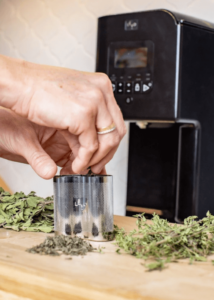
The LĒVO II has an airtight seal that helps contain the smell of whatever herbs you’re using, including flower. With the lid closed the smell is hardly noticeable, but when the lid is opened it will release the aroma a bit. Compared to using an oven to decarboxylate, the Activate cycle on the LĒVO II produces much less odor, offering you a discreet decarbing option.
Next Steps After Decarboxylation
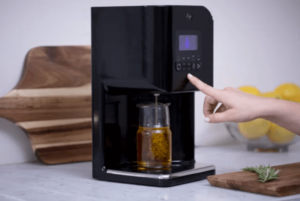
Not to mention, you can also use the LĒVO II to make activated topicals to help with muscle aches or tension, as well as therapeutic treats like CBD bath bombs or moisturizer. You have the power to choose what ingredients go into what you’re making, so you never have to worry about consuming or absorbing harmful ingredients that you might find in store-bought flower products.
Decarbing Flower at Home Summary
Making your flower edibles, topicals, and tinctures at home saves money and gives you control over what you’re putting in and on your body, but doing so requires some legwork upfront. You first have to activate or decarb your flower so you can experience its desirable effects.
- Decarboxylating, commonly known as “decarbing,” is the process of altering the chemical structure of the cannabinoids found in flower through heat. It’s also referred to as “activating” flower.
- Before cannabinoids like CBD and THC exist in their activated form, they exist in their raw, acidic form as cannabidiolic acid (CBDA) and tetrahydrocannabinolic acid (THCA). Decarboxylating burns off the acidic component, leaving you with the active compounds CBD and THC.
- THC binds to cannabinoid receptors in our ECS to make us feel high, but THCA is too big to fit into our receptors, so it physically can’t impart a high. This is why it’s so important to decarboxylate before you start cooking with flower. If you start with raw, unactivated flower, your recipe will be full of THCA and not THC, which means you won’t experience the desired effects.
- Your best option for decarbing flower with less smell is to use the LĒVO II, a countertop herbal-infusion machine that gives you the option to dry, activate (or decarboxylate), and infuse your flower. (Or any other herb you like!)
- The LĒVO II has an airtight seal that helps contain the smell of whatever herbs you’re using, including flower. With the lid closed the smell is hardly noticeable, but when the lid is opened it will release the aroma a bit. Compared to using an oven to decarboxylate, the Activate cycle on the LĒVO II produces much less odor, offering you a discreet decarboxylating option.
Decarbing flower at home used to be a lengthy, smelly process, but necessary to ensure the cannabinoids within the plant were activated. Now, thanks to new machines like the LĒVO II, not only does decarbing smell less, but you can also finish your whole recipe with the push of a button.
Related Posts:

Get Your Free eBook!
Download our FREE resource, The Ultimate Edibles Guidebook, full of recipes, infusion tips and everything you need to make your first batch of edibles today!

